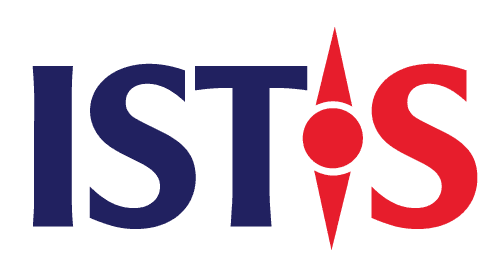In the final part of our series, we explore the future of data-driven analysis — from real-time analytics and federated learning to no-code tools and ethical AI. Discover the emerging trends, technologies, and cultural shifts that will define how data shapes decisions in the years ahead.
The Future of Data-Driven Analysis
As the data landscape continues to evolve, the future of data-driven analysis promises greater speed, precision, and democratization. Yet it also brings new challenges and responsibilities. Understanding the key trends shaping the future can help organizations, researchers, and policymakers harness data more effectively — and ethically — in the years to come.
1. From Descriptive to Prescriptive Analytics
While many organizations today use data primarily to understand what happened (descriptive) or why it happened (diagnostic), the next frontier is prescriptive analytics — systems that recommend specific actions based on predictive models. These systems can optimize everything from logistics routes to medical treatments, providing dynamic, data-backed guidance in real time.
2. Rise of Real-Time and Streaming Analytics
The traditional model of batch data processing is giving way to real-time analysis. Tools like Apache Kafka and Flink enable organizations to process and analyze data as it flows in. This is critical in applications like fraud detection, supply chain management, and smart city infrastructure, where response time can determine outcomes.
3. AI-Driven Automation and Augmented Analytics
Artificial Intelligence is transforming how data is collected, cleaned, visualized, and interpreted. Augmented analytics platforms use natural language processing (NLP) and machine learning to automate complex analysis and deliver insights to non-technical users. As AI becomes more accessible, decision-making will be less siloed and more collaborative across entire organizations.
4. Data Democratization
The future of data is not just about more powerful tools — it’s about broader access. Data democratization empowers employees at all levels to use data in their roles, supported by intuitive platforms and training. The ability to ask questions of the data — without needing to know how to code — is a major cultural shift that flattens hierarchies and speeds up decision-making.
5. Federated Learning and Privacy-Preserving Analytics
New approaches like federated learning allow models to be trained on decentralized data sources — such as smartphones or hospitals — without the data ever leaving the device. This enhances privacy while still allowing organizations to benefit from collective intelligence. Techniques like differential privacy and homomorphic encryption will further safeguard individual data in large-scale analysis.
6. Integration of IoT and Edge Analytics
The proliferation of sensors and connected devices — from wearables to industrial machinery — is generating unprecedented volumes of data. Edge analytics processes data locally on these devices, reducing latency and preserving bandwidth. In sectors like manufacturing, transportation, and agriculture, this enables quicker and more energy-efficient decision-making.
7. Greater Emphasis on Explainability and Accountability
As data-driven decisions influence everything from hiring to credit approval, there will be growing demand for systems that are not just accurate but understandable. Regulatory bodies may require transparency in algorithmic decision-making. Tools for explainable AI (XAI), bias audits, and ethics reviews will become standard in data science workflows.
8. Data Fabric and Unified Architecture
Data management is becoming more complex, with hybrid cloud environments, diverse sources, and regulatory constraints. A “data fabric” — an architecture that integrates and manages data across platforms in a unified way — will become essential. It supports self-service access while maintaining control, governance, and security.
9. Custom Models over Pre-Trained Ones
While many businesses today use off-the-shelf algorithms or pre-trained models, there is a trend toward creating more domain-specific, custom models trained on proprietary data. This allows for greater accuracy, competitive differentiation, and alignment with internal goals.
10. New Metrics for Success
Organizations are moving beyond KPIs that only track output or efficiency. Future data analysis will incorporate metrics around sustainability, social impact, inclusion, and long-term risk. These values-driven indicators will support holistic decision-making and reflect broader stakeholder expectations.
11. Education and Data Literacy at Scale
The most successful organizations will treat data literacy as a core competency, not a specialized skill. From frontline workers to executives, understanding how to interpret and apply data will be seen as essential as digital literacy was a decade ago. Schools and universities are also embedding data science into diverse disciplines, from journalism to sociology.
12. Citizen Data Scientists and No-Code Tools
A new generation of “citizen data scientists” — non-technical professionals who use intuitive tools to build models, dashboards, and reports — is on the rise. No-code and low-code platforms are accelerating innovation by enabling faster experimentation and reducing the burden on overextended technical teams.
13. Regulatory Evolution
As data capabilities grow, so too will the legal frameworks that govern them. We will see more international cooperation on standards, especially concerning cross-border data flows, AI accountability, and digital sovereignty. Organizations that proactively adapt to these changes will gain trust and avoid costly compliance issues.
14. Sustainability-Driven Analytics
With climate concerns rising, data is being used to optimize energy use, reduce emissions, and track progress toward sustainability goals. Carbon footprint dashboards, supply chain transparency tools, and environmental impact models will become commonplace in ESG reporting and strategy.
15. Crowd-Sourced and Open Data Models
Governments and nonprofits are increasingly embracing open data initiatives, releasing datasets on everything from air quality to budget spending. When combined with crowd-sourced data — such as citizen science or disaster mapping — this creates a powerful foundation for innovation and accountability.
16. Emotional and Sentiment Analysis
Data-driven analysis is extending into emotional and behavioral dimensions. Using NLP, computer vision, and wearable sensors, organizations can track sentiment in customer feedback, employee morale, or even political discourse. These insights are helping brands, governments, and nonprofits adapt more sensitively to stakeholder needs.
17. Cross-Sector Collaboration with Shared Data Ecosystems
Industries are beginning to collaborate on shared platforms that allow for anonymized data exchange. In healthcare, finance, and agriculture, these ecosystems create a network effect — the more data they have, the more value they generate. Interoperability and common standards will be key to making these collaborations successful.
18. Resilience and Scenario Planning
Data analysis is being used not just to optimize current operations, but to prepare for future disruptions. From supply chain stress testing to climate risk forecasting, predictive models help organizations build resilience into their long-term strategies.
19. Human-in-the-Loop Systems
The future is not fully automated. Human-in-the-loop systems ensure that machine decisions are overseen, questioned, and refined by people. This hybrid model balances the efficiency of automation with the nuance of human judgment, particularly in sensitive domains.
20. Data as a Shared Language Across Disciplines
Perhaps the most profound shift is cultural. Data is becoming a shared language that enables collaboration across fields — from science to policy, design to finance. As this language evolves, it will deepen our understanding of complex problems and our ability to solve them collectively.







